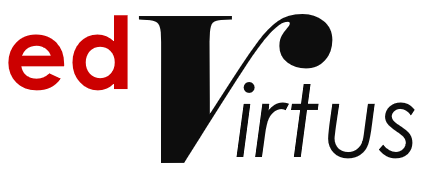
Fundamentals of Communications Systems
Presenter: Dr Mike Ryan
Click Register to view available course delivery modes (virtual/face-to-face), dates, and locations.
The registration page allows you to register individually or to register groups of up to 15.
Duration: 3 Days | Price: $2,970
Course Aim
The Fundamentals of Communications Systems course introduces attendees to the fundamental concepts, principles, technologies, and building blocks associated with modern electronic communications systems. Basic communications technologies and basic communications principles are introduced, which are then combined into descriptions of the fundamental building blocks of any electronic communications system. Applications of the basic communications system (combinations of the basic communications building blocks) are then presented, including networking, internetworking, cellular mobile communications, and satellite communications.
No prior technical or communications knowledge is assumed—in fact, the course is ideally suited to those who do not necessarily have a technical background. Attendees receive a copy of the presenter’s textbook Fundamentals of Communications and Information Systems.
Course Outline
Introduction: Brief History of Communications | Communications System Model | Analogue Signals | The Sine Function | Frequency / Wavelength | Complex Waveforms | The Frequency Domain / Bandwidth | The Electromagnetic Spectrum | Basic Circuit Theory | Decibels | Binary Numbers | Digital Signals / Digital Modulation | Advantages / Disadvantages of Digital Signals | Signalling Speed / Information Rate | Synchronous / Asynchronous Transmission
Modulation: Analogue Modulation | Amplitude Modulation – AM / DSB / SSB / ISB | Frequency Modulation | Phase Modulation | Digital Modulation – ASK / FSK / PSK | Digitisation of Analogue Signals / Waveform Coding – PCM / DM
Source Coding (Compression): Quantisation | Lossy and Lossless Compression | Entropy Coding | Predictive Coding | Transform Coding | Video Coding | Speech Coding | Line Coding
Channel Coding: Error Control – FEC / ARQ | Block Codes | Convolutional Codes
Encryption: Symmetric (Secret Key) Encryption | Asymmetric (Public Key) Encryption | Post-quantum Cryptography (PQC) Algorithms | Harvest-now-decrypt-later (HNDL) Attacks
Multiplexing & Multiple Access: Frequency Division Multiplexing (FDM) | Time Division Multiplexing (TDM) | Orthogonal Frequency Division Multiplexing (OFDM) | Time Division Multiple Access (TDMA) | Frequency Division Multiple Access (FDMA) | Spread Spectrum and Code Division Multiple Access (CDMA) | Frequency Hopping (FH) | Orthogonal Frequency Division Multiple Access (OFDMA)
Transmitters and Receivers: Transmitter Design | Receiver Design
Transmission Media: Transmission Line Theory | Copper Transmission Lines | Waveguides | Optical Fibres
Radio Propagation: History | Ground Wave – Space and Surface Wave | Sky Wave | Scattered Wave
Antennas: Antenna Characteristics | Resonant and Travelling Wave Antennas | Example Antennas
Types of Communications Systems: Simplex, Half-duplex and Duplex Systems | Switching - Circuit, Message, Packet and Cell
Networking: ISO OSI 7-Layer Model | History of LANS | LAN Standards | Network Topologies / Devices | Ethernet / Token Ring | Wi-Fi | Bluetooth | Time Hopping (Ultra-Wide Band) | Zigbee | LoRA
Internetworking: Repeaters / Bridges / Routers / Gateways / Firewalls / Switches | Internetwork Protocols—TCP/IP (IPv4 / IPv6) | Internet Structure / Growth | Protocols / Addressing and Routing | Broadband Access—ADSL / VDSL
Satellite Communications: Advantages / Disadvantages | Principles | Orbits | Sub-Systems | Launch Techniques | Ground Coverage | Multiple Access FAMA / DAMA / FDMA / TDMA / CDMA | Example Satellite Communications Systems—LEO / MEO / GEO
Mobile Communications: Cellular Architecture | First Generation | Second Generation (Digital) | Third generation (3G) | Fourth Generation (4G) | Fifth/Sixth Generation (5G / 6G)
Course Material
The following resources will be provided to attendees of this course:
A copy of the author’s book Fundamentals of Communications and Information Systems.
A PDF copy of the PowerPoint presentations used for the course.
